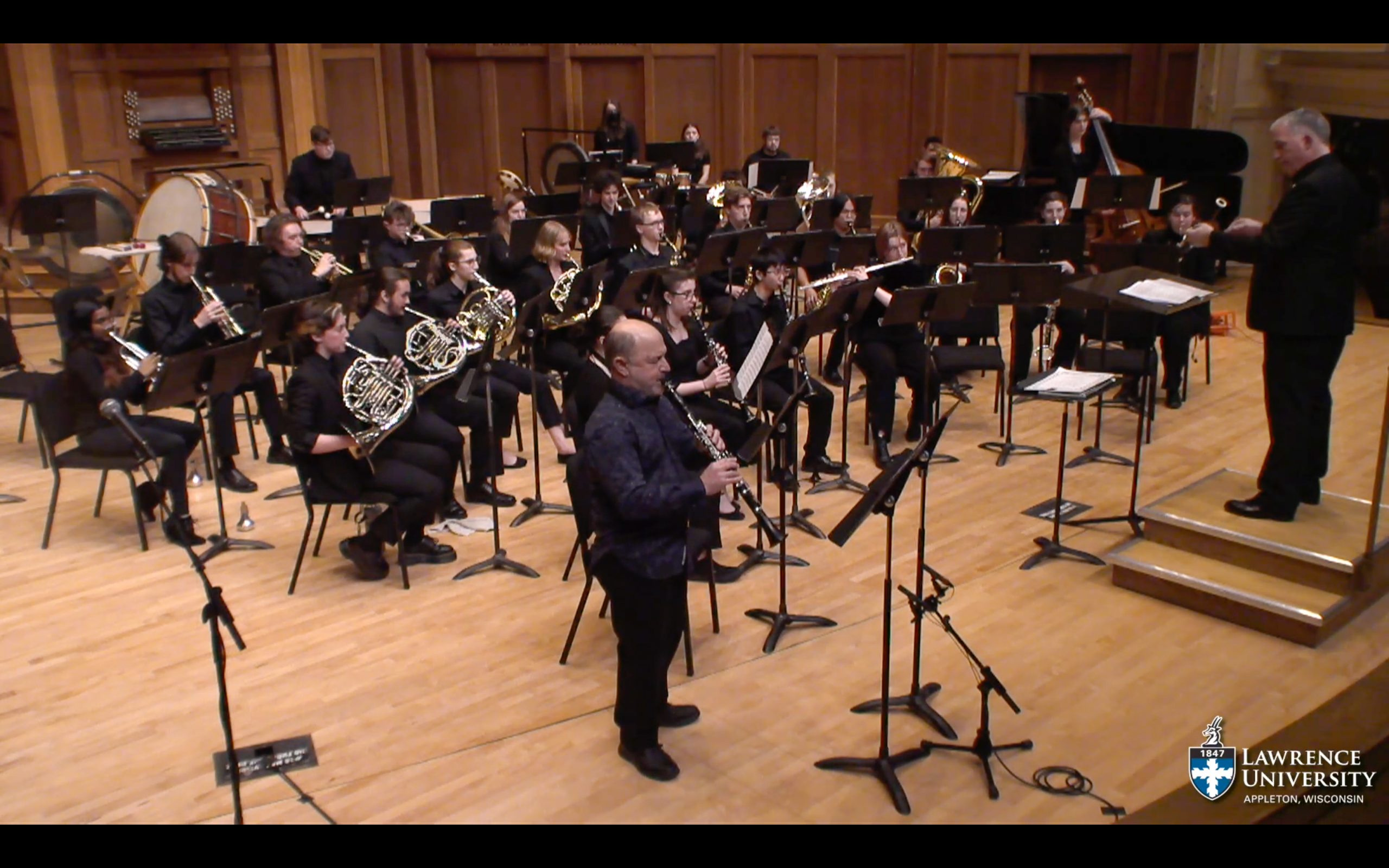This past Saturday, Feb 26th in the Lawrence Memorial Chapel, the Lawrence University Wind Ensemble led by Andrew Mast explored music from the early Romantic period to compositions from the last decade. There was exciting, delicate, captivating and somber music, delivered convincingly throughout.
The program began with a smaller chamber ensemble, performing the Finale of Carl Reinecke’s “Octet” for winds. Written in 1892, the work’s plainly Romantic nature offered satisfying harmonies throughout. Much of the melodic material was given to the flautist, which Amber Newman played with profound ease and expression. Junior Iris Hakes, who played Bassoon, noted that “we had to think a lot about balance […] one flute versus seven other instrumentalists is a difficult battle to fight.”
The subsequent “Guignol” was written by American composer Stephen Michael Gryc in just 2016. Essentially a bassoon concerto, the performance featured Lawrence’s own bassoon professor, Carl Rath, alongside a larger selection of Lawrence musicians. The first movement, “Disputes,” sounded very much argumentative with the soloist and band frequently exchanging musical ideas, sometimes in collaboration, other times in disagreement.
In the second movement, “A Strange Occurrence in the Night,” the flutes began with a brief chorale, before Rath entered with a melodious theme. Rath’s approach was restrained but deeply personal, with the inclusion of a certain hushed lyricism. For the final “Running Amok” movement, the ensemble and soloist delicately approached the quickly moving passages throughout.
The ensemble grew again for the next work: “Summerland” by William Grant Still. Its opening clearly evoked a slow, scorching summer day with gradually unfolding thematic material. In particular, the muted trumpets added a certain dryness to the atmosphere. Subtle hints of impressionist harmonies were also included in the already rich texture.
Artie Shaw’s 1940 “Concerto for Clarinet” in an arrangement by Dane Teter, was next. Featured now was Lawrence’s clarinet professor, David Bell, who offered a fun and exciting take on the jazz-based work. Throughout the work, numerous soloists emerged from the ensemble. Early on this included a masterful piano solo from Keegan Moore, while later Tristan Dock gave an expressive trumpet solo.

For their finale, the Wind Ensemble performed Vittorio Giannini’s “Symphony No. 3”. Described by Mast as an “unabashedly Romantic piece for Band,” Giannini was an American born composer of Italian descent known for his operas. As such, soaring operatic melodies penetrated throughout, as did grand and sweeping musical gestures.
The first movement — “Allegro energico” — began as a heroic, albeit gentle march, mostly lead by woodwinds. The brass added occasional punctuation, but they first entered the forefront during a trombone chorale, which was approached with admirable consideration.
Sherilyn Patterson began the second movement, “Adagio,” with an impressively delicate and lyrical oboe solo. Indeed, the second movement was solo-centered, with the oboe, flute, clarinet and trumpet each exchanging melodies, alongside trombone and horn chorales as well as occasional triangle strikes.
For the following “Allegretto” third movement, the music moved quicker than earlier. The opening theme was a dance-like motif that lilted around in six-eight time. Gradually, the sections passed the tune around, with smooth succession between entrances. As a particularly hard movement to conduct and cue, Mast never wavered, offering a steady conducting pattern for the otherwise chaotic music.
Cascading woodwinds and loud percussion hits began the fourth movement titled Allegro con brio. The wind runs were technically sound, though many of the crescendos felt anti-climactic. In a strange twist, the music twice dissolved into a march, but the opening material quickly returned as the energy ramped up.
Junior Iris Hakes commented that she “thought it was nice to give both of these retiring faculty an opportunity to perform a concerto.” Indeed, having two concertos on a program is not typical, but Hakes explained that “I think both of the concertos were really different than each other and gave different experiences […] so I don’t think it was redundant.” In all, it seemed a fitting farewell to two long-time professors at the university.

